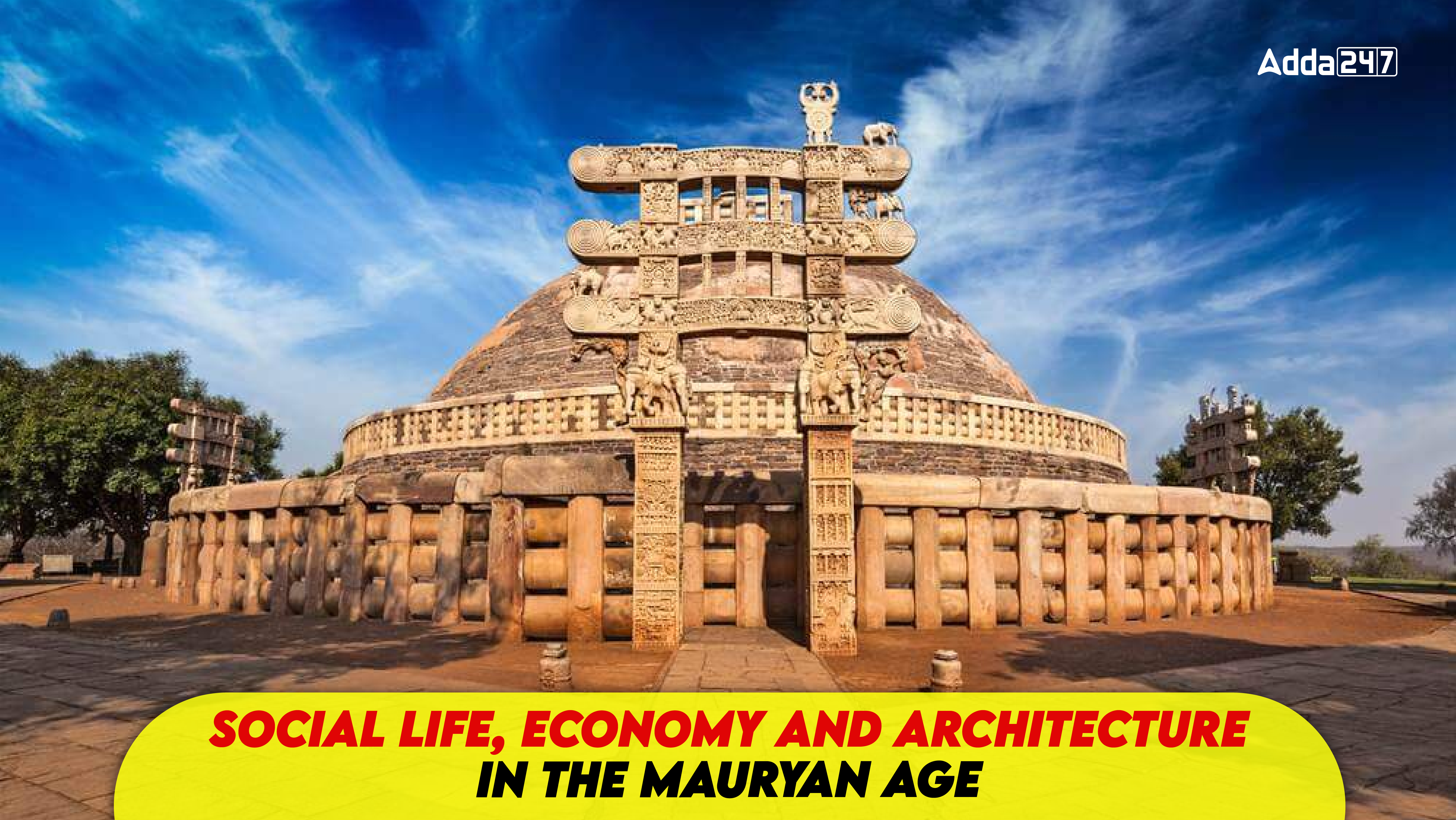Table of Contents
Mauryan Age: Ancient India holds a significant place in Indian history, with the Mauryan Age often considered its golden period due to its extensive conquests and vision of Akhand Bharat.
This article will delve in detail into the social life, economy, and architecture of the Mauryan Empire, as well as other practices that made it significant as it is an important topic for UPSC civil service exam’s mains GS paper 1 and optional paper and important questions may be framed from this, Students can also find links to article dealing with the decline of Mauryan Age at last of this article.
Mauryan Age
- Mauryan age can be marked from 322BC to 185BC with the end of Nanda dynasty.
- Dhana Nanda was last ruler of the Nanda dynasty and had opperesive tax regimes which made dissatisfaction in the public.
- Chandra Gupta Maurya took over after defeating Dhana Nanda and founded Mauryan Empire with guidance from Chanakya
- Important rulers of Mauryan Dynasty include Chandra Gupta Maurya, Bidusar, and Ashoka
Rulers of Mauryan Age
- Chandragupta Maurya :
- Defeated Seleucus in the Hindu Kush region.
- Greek historians Megasthenes and Dionysius resided at the Mauryan court as Greek ambassadors.
- Begin eastward expansion towards Magadha and defeated the last ruler of the Nanda Dynasty.
- Converted to Jainism.
2. Bindusara :
- Bindusara succeeded Chandragupta Maurya
- Bindusara had a Bindu (DOT) on his forehead because of poison consumption before birth.
- Bindusara brought 16 more states under the Mauryan empire and extended towards the south by conquest of Indian peninsula
- Chanakya was a minister in his court.
3. Ashoka :
- Ashoka was a son of Bindusara and succeeded to the throne after him.
- He is known to be the greatest king of the Mauryan Empire.
- He introduced inscriptions for messages.
- After taking the throne he fought only one war in Kalinga, this was his last war.
- he won the war but he witnessed the destruction and violence in the war and decided to give up the idea to conquer the world.
- Converted to Buddhism, he held the 3rd Buddhist council and sent missionaries to Sri Lanka, Burma, and many other countries.
- He appointed Dhamma Mahamatta to propagate his dhamma among the people.
Now that we have gained insights into the Mauryan Empire and rulers let now understand further the social life of people, the economy and taxation systems used before and after the Mauryan Empire was founded, art, culture, and architecture that evolved over the period
Mauryan Age and Social Life of people
Megasthenese writings provide an overview of the society in the Mauryan Empire where he describes that there existed 7 castes these are namely Philosophers, Farmers, Soldiers, Herdsmen, Artisans, Magistrates, and Councilors.
Megasthenese had a failure in understanding Indian society and were confused among Jati, Varna, and the occupation.
Megasthense denies the existence of the slavery institution in the Mauryan Empire and mentions the strict penalties imposed on misbehaving with women during the period of Mauryans.
Craftsmen occupied a prominent position in society as the urban way of life grew and Buddhist monasteries grew in importance as educational institutions though there was a decline in Aadvik followers, who opposed karma and believed in destiny.
Economy of Mauryan Age
During Mauryan Age standard unit of transactions were mainly in silver coins, generally punch-marked coins.
Focus on foreign trade was prevalent and, trades were carried through both land and sea and traded items included indigo, medicinal substances, cotton as well as silk
Agriculture was an important economy activity during this period and irrigation taxes like Kara, Bali, and Udaka-Bhaga, also called as water rate constituting 1/5th-1/3rd of the crop, were mentioned by Kautilya, irrigation facilities were provided by the Setubandha.
The tax collected from peasants varied from 1/4 to 1/6 of the produce.
Art, Culture, Architecture in Mauryan Age
There are about 39 inscriptions which are broadly classified into four categories.
- Minor rock edicts
- Major rock edicts
- Minor pillar edicts
- Major pillar edicts
When Ashoka adopted Buddhism, it led to the development of stupas, caves, viharas, and pillars. Stupas are large dome-shaped structures used as Buddhist shrines. Viharas are residential buildings where Buddhist monks live. Mauryan art mostly focused on sculpture.
Pillars were created for memory as they were inscribed, there was a focus on Buddhist themes and the period is noted for the development of the art of stone carving.
The Mauryan Art can be classified into
- Court Art dealing with Palaces, pillars, and Stupas
- Popular Art dealt with caves, pottery, and sculptures
Mauryan inscriptions employed various languages and scripts, reflecting the linguistic diversity of the empire. The primary language used was Prakrit, a derivative of Sanskrit, which was understood by the common people.
Famous Mauryan Age Inscriptions include –
- Ashoka Rock Edicts – These highlight Ashoka’s principle of non-violence
- Minor Rock Edicts – These give us information about the administration.
- Pillar Edicts – Inscriptions tell us about Ashoka’s adoption and belief in Buddhist philosophy.
- Rummindei Pillar Inscription – This inscription marks the birthplace of Gautama Buddha and Ashoka’s pilgrimage to the site.
- Queen’s Edict at Sanchi – Information about the royal queens and their workings in the society.
| Mauryan Related Article | |
| Sources of Mauryan Age | Mauryan Empire |
| Post Mauryan Age | UPSC History Syllabus |
| The Palaeolithic Age | The Neolithic Age |



 TSPSC Group 1 Question Paper 2024, Downl...
TSPSC Group 1 Question Paper 2024, Downl...
 TSPSC Group 1 Answer key 2024 Out, Downl...
TSPSC Group 1 Answer key 2024 Out, Downl...
 UPSC Prelims 2024 Question Paper, Downlo...
UPSC Prelims 2024 Question Paper, Downlo...





